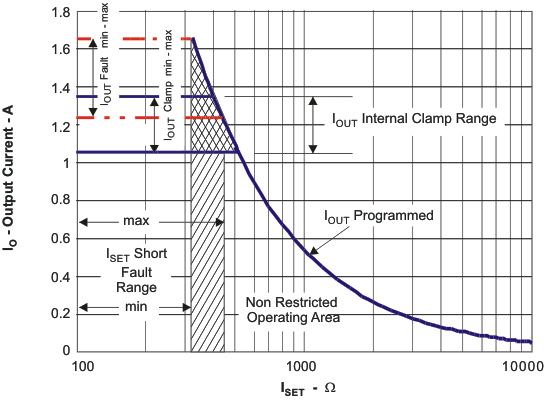JAJSDJ9D April 2016 – January 2019
PRODUCTION DATA.
- 1 特長
- 2 アプリケーション
- 3 概要
- 4 改訂履歴
- 5 Device Comparison
- 6 Pin Configuration and Functions
- 7 Specifications
- 8 Detailed Description
- 9 Application and Implementation
- 10Power Supply Recommendations
- 11Layout
- 12デバイスおよびドキュメントのサポート
- 13メカニカル、パッケージ、および注文情報
8.4.4 ISET
An external resistor is used to Program the Output Current (50 to 800 mA) and can be used as a current monitor.
where
- IOUT is the desired fast charge current;
- KISET is a gain factor found in the electrical specification
For greater accuracy at lower currents, part of the sense FET is disabled to give better resolution. Figure 1 shows the transition from low current to higher current. Going from higher currents to low currents, there is hysteresis and the transition occurs around 0.15 A.
The ISET resistor is short protected and will detect a resistance lower than ≉340 Ω. The detection requires at least 80mA of output current. If a “short” is detected, then the IC will latch off and can only be reset by cycling the power. The OUT current is internally clamped to a maximum current between 1.05 A and 1.4 A and is independent of the ISET short detection circuitry, as shown in Figure 8. Also, see Figure 23 and Figure 24.
 Figure 8. Programmed/Clamped Out Current
Figure 8. Programmed/Clamped Out Current